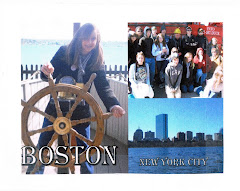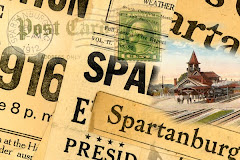On the literary map, travel from Asheville to Flat Rock, North Carolina.
Calculate:
# _____________ Miles to Flat Rock, North Carolina
$ _____________ Cost for Gasoline to Flat Rock, North Carolina
In Flat Rock, visit another one of his homes. Go to Mrs. Steller's Sandburg Gallery. Years ago, my children and I loved having picnics near the little pond. They especially enjoyed seeing the goats.
On the literary map, travel from Glencoe to Chicago, Illinois.
Calculate:
# _____________ Miles to Chicago, Illinois
$ _____________ Cost for Gasoline to Chicago, Illinois
Visit Carl Sandburg at www.Poets.org and fill-in-the-blanks.
"Carl Sandburg was born in Galesburg, Illinois, on January 6, 1878. His parents, August and Clara Johnson, had emigrated to America from the north of ___________. After encountering several August Johnsons in his job for the railroad, the Sandburg's father renamed the family. The Sandburgs were very poor; Carl left school at the age of thirteen to work odd jobs, from laying bricks to dishwashing, to help support his family. At seventeen, he traveled west to Kansas as a hobo. He then served eight months in Puerto Rico during the Spanish-American war. While serving, Sandburg met a student at _______________, the small school located in Sandburg's hometown. The young man convinced Sandburg to enroll in Lombard after his return from the war. After graduation and later as a poet, Sandburg became known for his free verse poems 'celebrating ___________ and __________ America, American __________ and __________, and the American ___________ people.'”
READ “Chicago.”
In writing about Chicago, Sandburg uses personification, a figure of speech in which something nonhuman is given human qualities. (a) In the first section of the poem, what words and phrases give Chicago human qualities? (b) What phrases give the city human occupations?
The “personality”” of Chicago suggests a complex industrial city. (a) What do lines 10-11 suggest are its chief strengths? (b) What are its weaknesses?
What final evaluation does the poem make? How is line 21 important to that evaluation?
READ “Prayers of Steel.” Sandburg uses steel as a symbol for the modern industrial age. (a) According to lines 3-4, what function does steel serve in modern society? (b) What contrasting function is presented in the second half of the poem?
READ “Grass.” Austerlitz, Waterloo, Gettysburg, Ypres, and Verdun were all sites of great battles. What power, represented by grass, does Sandburg pose against the significance of such events?
What does the phrase “Shovel them under” suggest about the poet’s attitude toward these events?
Calculate:
# _____________ Miles to Flat Rock, North Carolina
$ _____________ Cost for Gasoline to Flat Rock, North Carolina
In Flat Rock, visit another one of his homes. Go to Mrs. Steller's Sandburg Gallery. Years ago, my children and I loved having picnics near the little pond. They especially enjoyed seeing the goats.
On the literary map, travel from Glencoe to Chicago, Illinois.
Calculate:
# _____________ Miles to Chicago, Illinois
$ _____________ Cost for Gasoline to Chicago, Illinois
Visit Carl Sandburg at www.Poets.org and fill-in-the-blanks.
"Carl Sandburg was born in Galesburg, Illinois, on January 6, 1878. His parents, August and Clara Johnson, had emigrated to America from the north of ___________. After encountering several August Johnsons in his job for the railroad, the Sandburg's father renamed the family. The Sandburgs were very poor; Carl left school at the age of thirteen to work odd jobs, from laying bricks to dishwashing, to help support his family. At seventeen, he traveled west to Kansas as a hobo. He then served eight months in Puerto Rico during the Spanish-American war. While serving, Sandburg met a student at _______________, the small school located in Sandburg's hometown. The young man convinced Sandburg to enroll in Lombard after his return from the war. After graduation and later as a poet, Sandburg became known for his free verse poems 'celebrating ___________ and __________ America, American __________ and __________, and the American ___________ people.'”
READ “Chicago.”
In writing about Chicago, Sandburg uses personification, a figure of speech in which something nonhuman is given human qualities. (a) In the first section of the poem, what words and phrases give Chicago human qualities? (b) What phrases give the city human occupations?
The “personality”” of Chicago suggests a complex industrial city. (a) What do lines 10-11 suggest are its chief strengths? (b) What are its weaknesses?
What final evaluation does the poem make? How is line 21 important to that evaluation?
READ “Prayers of Steel.” Sandburg uses steel as a symbol for the modern industrial age. (a) According to lines 3-4, what function does steel serve in modern society? (b) What contrasting function is presented in the second half of the poem?
READ “Grass.” Austerlitz, Waterloo, Gettysburg, Ypres, and Verdun were all sites of great battles. What power, represented by grass, does Sandburg pose against the significance of such events?
What does the phrase “Shovel them under” suggest about the poet’s attitude toward these events?



















